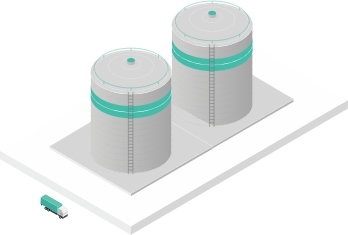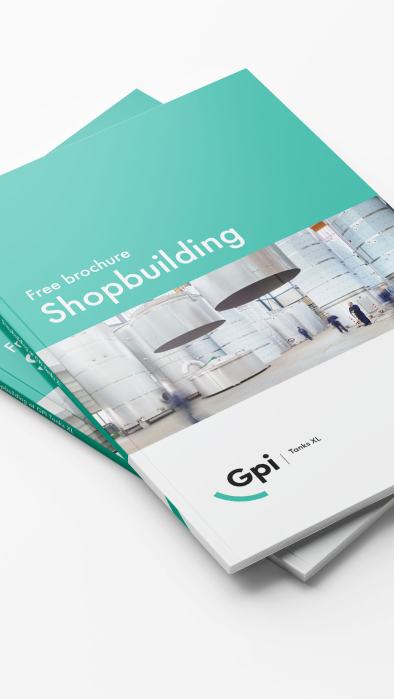Gpi Tanks XL constructs its storage tanks from stainless steel, a material that may also be referred to as ‘inox’ from the French word inoxydable, which translates simply as ‘stainless’. It is important to note that stainless steel is not, as is often assumed, rust-free by definition, but it is certainly highly resistant to corrosion, and is therefore rustproof. For this reason, we always produce our tanks from this material.
The properties of stainless steel
Stainless steel is a highly alloyed type of steel, a mixture of several materials combined to achieve certain properties. The most common type of stainless steel is that with an austenitic structure, including the common types 304(L) and 316(L). Stainless steel types are created from an alloy (mixture of metals) of defined quantities of iron, chrome, nickel and carbon. Other metals may be added if certain properties are needed.
Adding nickel and chrome makes the material easier to work, stronger at high temperatures and more resistant to corrosion. If the chrome comes into contact with oxygen, an invisible oxide layer will form to protect the underlying metal from rust formation, generating high resistance to corrosion.
Stainless steel compared to steel
Steel, i.e. low alloyed steel, comprises iron and a small quantity of carbon. Plain steel lacks other metals such as chrome, which means that it does not have the same resistance to corrosion as stainless steel. Steel is degraded more quickly, and rust forms more quickly as a result. The rust then spreads more easily throughout the material. The resistance to corrosion of stainless steel is one of the most important reasons for choosing it over plain steel for tank construction, but there are other reasons. The key advantages:
- Thinner
- Better welding capability
- Lower maintenance costs
- Lower thermal expansion
- Better mechanical strength
- More durable
- Greater resistance to wear and erosion
Stainless steel can rust if damaged or impaired by chemical substances. It is, therefore, important to handle the material correctly and to choose the correct type of stainless steel for the ultimate use. It is also important to select the right finish. Our Gpi experts can offer the right advice.
Duplex stainless steel – the best in class
Duplex is a variety of stainless steel that is increasingly being used for tank construction. It is a thinner material than the more common types, 304 and 316, but much stronger and resistant to corrosion. Duplex comes in a range of types with a range of different properties.
It is particularly suited to the (petro)chemicals industries on account of its exceptional resistance to corrosion, plus its strength makes it ideal for large tanks with high strength requirements. Thin duplex is as strong if not stronger than many of the commonly used types of stainless steel, which means that less material is needed and construction is more cost-efficient.
Duplex can often be more difficult to work and welding is more complex – at temperatures in excess of 250°C, the structure begins to change, which in turn impairs corrosion resistance and introduces brittleness. To prevent this from happening, it is important to work with the material in the correct manner.
All in all though, when used on large tanks, duplex often involves lower overall costs thanks to the thinner wall thickness, improved construction times and lower maintenance costs.
Pickling and passivating stainless steel
Working the material during production can impair the oxide layer, which is the layer responsible for the corrosion resistance – for example, cutting and welding can cause damage. As such, stainless steel always requires a finish, involving treatment in acid followed by cleaning (pickling). The oxide layer can then form naturally again (passivating) over 24 hours.








Please get in touch or send us an enquiry
If you’d like to know more about stainless steel or need advice from one of our experts, please get in touch. For a quote, please follow the unique and simple step-by-step process that we have set up to help you.
